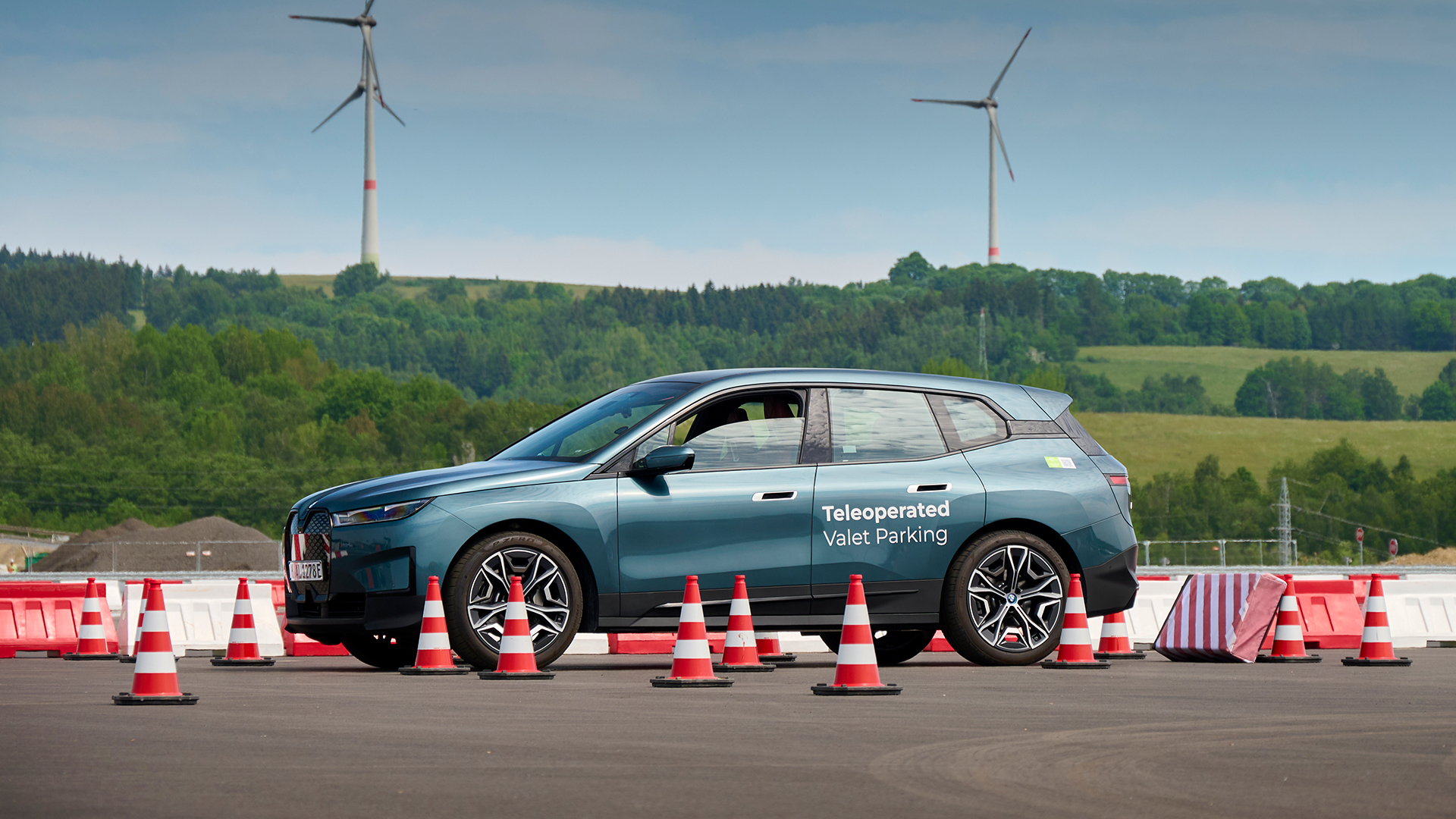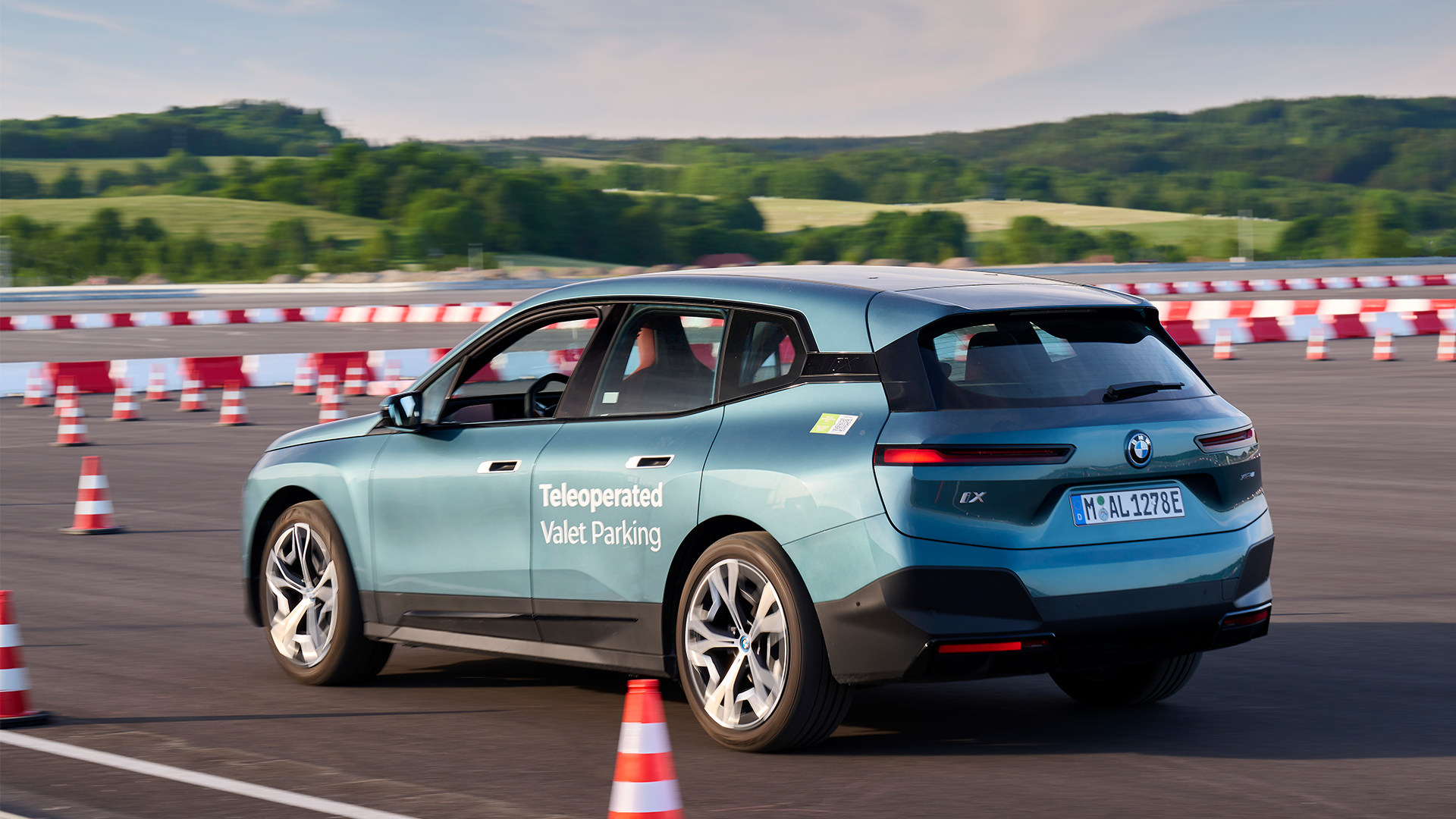I parked a BMW remotely using a Sim Racing Rig and it was as bizarre as it sounds
Teleoperated valet parking could spell the end of multi-storey mishaps


If you attended the Consumer Electronics Show in Las Vegas this year, you may have noticed a number of BMW iX models trundling around the parking lot with nobody behind the wheel.
Fret not, this wasn't some terrible handbrake mishap, but the German marque's project with autonomous driving specialist Valeo to introduce the next-generation of highly automated Level 4 parking solutions.
The idea is that we will eventually get to a point where a driver pulls up to a hotel, multi-story car park or large parking lot, hops out of the vehicle and lets on-board self-driving tech do the rest. The car will simply amble off, find a spot and wait for the driver’s return.
"The system we are showing at CES requires no additional technology, as it uses the cameras and sensors found in the iX. Data is then transferred over-the-air, so this set-up is really ready to go," a BMW representative told me as I slipped into a racing sim rig that would act as the remote controls during my demonstration.

Once comfortably sat, I was faced with a steering wheel and three pedals, although all I really needed was the accelerator pedal, as the iX was limited to just 10km/h (around 6mph) when placed in its semi-autonomous parking mode.
The large curved display in front of me played live video feeds from the 360-degree cameras placed around the car, as well as footage from the front-facing camera.
There was a secondary touchscreen display that allowed me to put the car in drive, reverse, neutral or park, while a handful of fully-automated parking functions were also offered via digital buttons.
Get all the latest news, reviews, deals and buying guides on gorgeous tech, home and active products from the T3 experts
An eerie experience
Despite being able to see the vehicle in the parking lot, all of the interaction I had with the iX was via this curved gaming display. Typically, these video feeds act as driver aids, rather than the direct means of controlling the car, so it felt very odd at first.
What's more, the accelerator pedal was mapped to speed, rather than acting as a linear way to build power. Full throttle had the car up to its maximum teleoperated parking speed, while half throttle naturally halved the speed and anything below that brought the driverless vehicle to a complete stop.

This took some getting used to and admittedly, I accidentally halted the car several times before I grasped the concept.
For this demonstration, BMW had set up an obstacle course in the parking lot, consisting of cones and barriers to drive through. Response from steering inputs was borderline instantaneous and BMW's digital warning overlays on the video feeds made it easy to place the car, avoid cones and anything else potentially damaging.
"You can try, but the car will never let you drive into anything," the BMW representative explained. As I got dangerously close to the barriers on a couple of occasions, the iX reduced its speed to a crawl and would then eventually stop.
Baby steps to autonomous parking
The second lap of the course felt a lot smoother, as I was able to maintain a good amount of speed and navigate the obstacles without instinctively lifting off the throttle. That said, interacting with the vehicle via video feeds never felt any less bizarre.
On this second run, I was also able to harness the power of BMW's fully autonomous parking systems. Simply driving close to a parallel or reverse-in parking spot allowed the iX to size up its options. Stopping the vehicle and pressing a menu on the small additional touchscreen display then had the iX perform the parking manoeuvre flawlessly and without me having to do anything.

During my time in the hot seat, the BMW representative overseeing my run said that the company was in talks with major parking and fleet providers, both in Europe and the US, about how the company could introduce greater levels of autonomy to this setting.
"This system is a great step towards fully automated parking, as it still sees a human in control but allows BMW owners to pull up, hop out and not have to deal with finding a space," our chaperone stated.
Seeing as the iX I was remotely piloting required no additional technology, the only thing needed to make this a reality is software and a solid data connection between car and remote command centre.

With that in mind, the system is something that could be adopted by a whole host of providers, from car rental companies wanting to remotely shuffle vehicles around, to premium hotels with a high turnover of customer cars.
However, seeing as most vehicle manufacturers are exploring ways to offer services like this as an additional software subscription package, we can’t imagine the experience will be cheap.
Leon has been writing about automotive and consumer tech for longer than he cares to divulge. When he’s not testing the latest fitness wearable and action camera, he’s out in a shed fawning over his motorcycles or trying not to kill himself on a mountain bike/surfboard/other extreme thing. He's also a man who knows his tools, and he's provided much of T3's drills coverage over the years, all without injuring himself.
